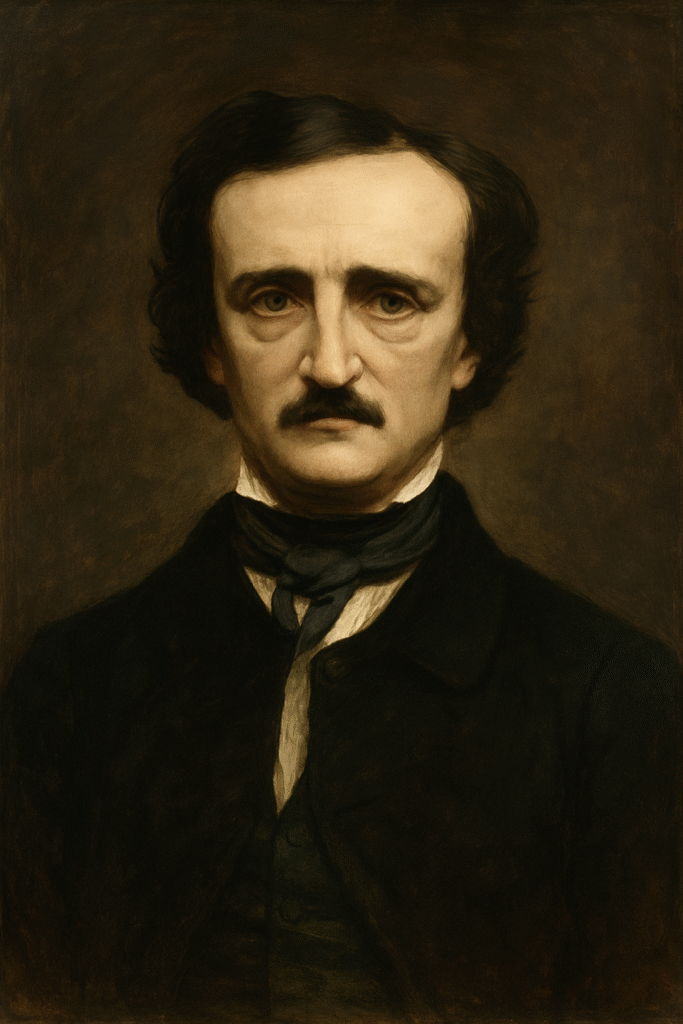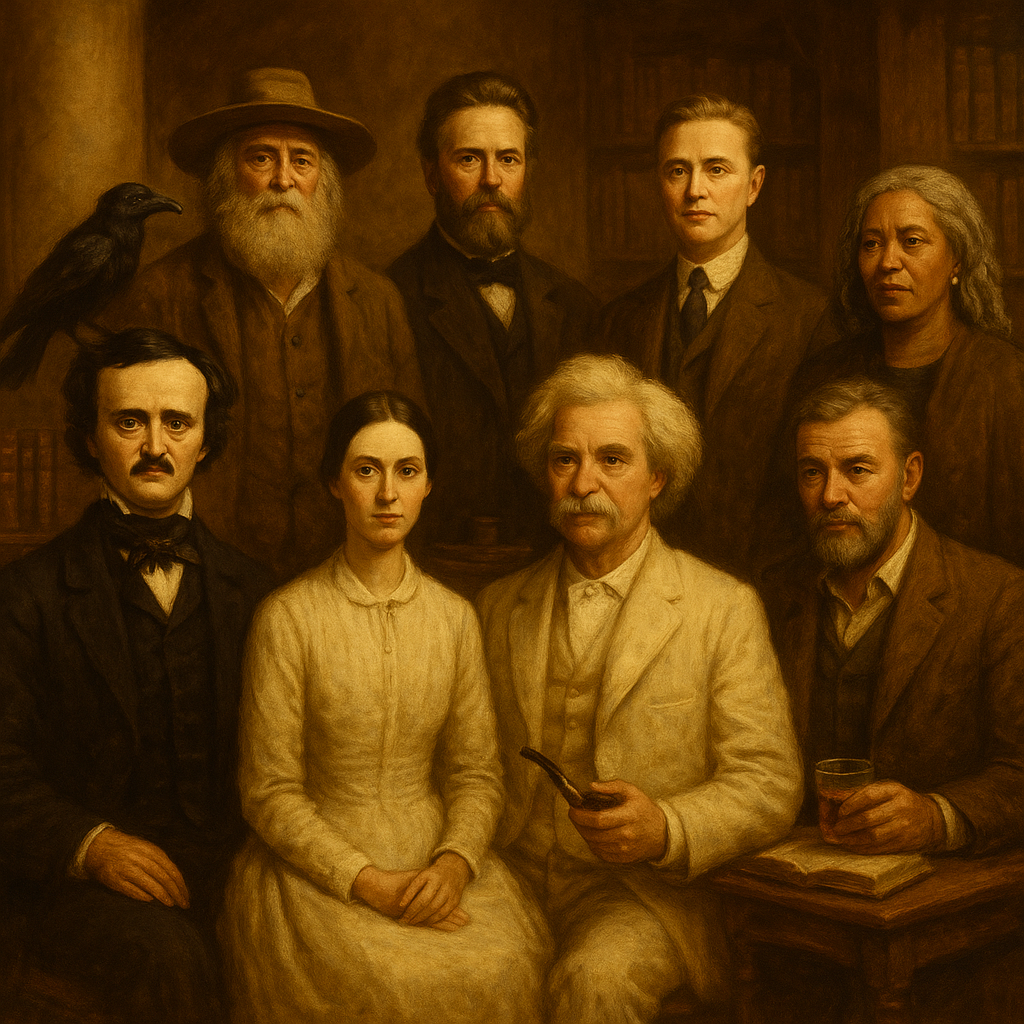Edgar Allan Poe-The Life and Legacy
Introduction
Edgar Allan Poe stands as one of the most iconic figures in American literature. His mastery of the macabre, innovative storytelling techniques, and poetic genius shaped an entire genre. Known for his dark and mysterious tales, Poe’s impact remains visible in both literature and popular culture. Edgar Allan Poe has influenced countless writers, and his style continues to be studied in classrooms worldwide.
Early Life and Troubled Childhood
Born on January 19, 1809, in Boston, Edgar Allan Poe faced hardship early in life. His parents, who were actors, died before he turned three. He was taken in by John and Frances Allan, a wealthy couple in Richmond, Virginia. Though never formally adopted, Poe added “Allan” to his name as a sign of respect.
He showed signs of brilliance from a young age. He was particularly interested in literature and languages. Despite this talent, his relationship with his foster father became strained. Differences over money and education caused rifts that never fully healed. Poe’s early years shaped his themes of abandonment and isolation.
Education and Early Career
Poe enrolled at the University of Virginia in 1826. Although academically successful, he struggled financially. Unable to afford basic needs, he turned to gambling and debt. His foster father refused to help, and Poe had to drop out after one year.
In 1827, Poe moved to Boston and published his first book of poems. Titled Tamerlane and Other Poems, it received little attention. To earn a living, he enlisted in the U.S. Army. His experience in the military helped him develop discipline, although he later sought dismissal. Poe eventually entered the United States Military Academy at West Point, only to be expelled due to neglect of duties.
Literary Breakthrough and Struggles
After leaving West Point, Poe focused on writing full-time. He moved between cities such as Baltimore, Philadelphia, and New York. During this period, he began publishing short stories that showcased his unique style. His breakthrough came in 1835 with the publication of “MS. Found in a Bottle,” which won a literary prize.
In 1839, he published Tales of the Grotesque and Arabesque, which included some of his most memorable stories. These works marked the beginning of a new literary direction in American fiction. However, financial difficulties plagued Poe throughout his life. Editors often underpaid him, and he struggled to find stability.

Marriage and Personal Life
In 1836, Poe married his 13-year-old cousin, Virginia Clemm. The marriage was both passionate and tragic. Virginia’s ongoing illness deeply affected Poe. He adored her and often wrote poems inspired by their relationship. However, her health deteriorated, and she eventually died in 1847.
Her death devastated Poe. He became increasingly erratic, struggling with depression and alcohol use. Despite these personal challenges, he continued to write and publish some of his finest work during this time.
Master of the Short Story
Edgar Allan Poe revolutionized the short story format, and his impact on the genre cannot be overstated. He strongly believed that every single element of a story should contribute directly to one unified effect, and this conviction guided both his writing practice and his critical theories. Because of this principle, his stories became extremely powerful, highly cohesive, and uniquely memorable. For instance, in his famous tale “The Fall of the House of Usher,” every sentence, every description, and every carefully chosen word contributes to the overwhelming atmosphere of dread and decay. The imagery of the crumbling mansion, the strange behavior of its inhabitants, and the gloomy environment all combine seamlessly to reinforce the same haunting mood. Therefore, Poe’s mastery lies in his ability to merge structure and style, ensuring that readers experience one lasting, unified emotional impact.
Another equally significant example of Poe’s artistic genius is his chilling story “The Tell-Tale Heart,” which demonstrates his remarkable skill at exploring psychological horror in unprecedented ways. The obsessive narrator, driven by paranoia and guilt, descends steadily into madness, and every detail in the narrative works together to heighten tension, suspense, and intrigue. Through the pounding sound of the imagined heartbeat, the short, sharp sentences, and the increasingly frantic pace, Poe carefully draws readers into the character’s disturbed mind. As a result, the story becomes not just a tale of crime, but also a disturbing study of inner torment. Consequently, these innovations completely transformed how later writers approached the short story form, inspiring them to experiment with unity, structure, and psychological depth. Because of these achievements, Poe is now widely recognized and celebrated as the true father of the modern short story.
The Birth of Detective Fiction
Edgar Allan Poe also invented a new genre: detective fiction. In 1841, he published “The Murders in the Rue Morgue.” This story introduced the character of C. Auguste Dupin, a brilliant thinker who solves crimes through logic and deduction. Poe’s narrative style laid the groundwork for future detective stories.
Writers such as Arthur Conan Doyle credited Poe as a major influence. The character of Sherlock Holmes owes much to Dupin. Poe’s structure of revealing the mystery through analysis rather than action became the standard for detective fiction. His contributions in this genre are often overlooked but remain foundational.
Poetry and Symbolism
Poe’s poetry is equally influential. His most famous poem, The Raven, was published in 1845. It gained instant success and remains a cultural icon. The poem’s musicality, repetition, and dark mood captivated readers. “Nevermore,” the raven’s haunting refrain, became a symbol of despair and loss.
Another notable poem, Annabel Lee, explores themes of love and death. Poe’s ability to blend emotion with musical structure made his poetry unforgettable. He often used symbolism to deepen meaning. In The Raven, the bird itself represents unending sorrow. His poems resonate due to this layered complexity.
Themes and Literary Style
Edgar Allan Poe’s work is known for several recurring themes. Death, madness, and the supernatural dominate his narratives. He explored the human psyche in ways no one had before. Whether through unreliable narrators or eerie settings, he created a sense of unease that lingers.
His style also featured elaborate vocabulary, rhythmic language, and vivid imagery. These qualities set his work apart from contemporaries. Poe combined classical structure with romantic emotion. This fusion gave his stories a timeless quality. Writers and scholars continue to study his techniques.
Critical Reception and Legacy
During his lifetime, Poe received mixed reviews. Some praised his innovation, while others dismissed his work as too dark. Financial success largely eluded him. However, his reputation grew after his death in 1849. Critics began to appreciate his literary contributions more fully.
Over time, Poe gained recognition as a pioneer. His work is now central to studies in gothic literature, horror, and detective fiction. Many universities include his stories and poems in their curriculum. Modern horror authors cite Poe as a foundational influence.
Death and Posthumous Fame
Poe died under mysterious circumstances on October 7, 1849. He was found delirious in Baltimore and never recovered. The exact cause of death remains unknown. Theories range from alcohol poisoning to rabies. His strange end added to his legend.
Despite his tragic life, Poe’s fame grew after death. Collections of his work were published, and his literary importance was reassessed. Monuments and museums now honor him. Events celebrating Poe occur annually across the world. His influence spans continents and centuries.
Poe’s Global Impact
Poe’s writing transcended national boundaries. His works were translated into multiple languages during his lifetime. French poet Charles Baudelaire helped popularize Poe in Europe. Baudelaire saw Poe as a kindred spirit and translated his stories into French. This made Poe a literary icon in France.
Writers in Japan, Russia, and Latin America also admired his work. His themes of existential dread, love, and isolation have universal appeal. Today, Edgar Allan Poe remains a global figure in literature. His stories continue to be adapted into films, television, and even music.
Poe in Popular Culture
Poe’s influence extends beyond literature. His image and stories appear in countless forms of media. Filmmakers have adapted his tales into movies since the early 1900s. Characters inspired by his creations feature in horror and mystery genres.
Television shows, comic books, and video games actively reference Edgar Allan Poe’s work, and these countless references demonstrate his lasting cultural impact. Moreover, his legacy extends strongly into music, since many bands, singers, and even classical composers deliberately draw inspiration from his haunting poems and eerie tales. In addition, his influence clearly reaches into sports, because the Baltimore Ravens football team directly takes its name from Poe’s most famous poem “The Raven.” Furthermore, museums, festivals, and countless adaptations constantly celebrate his legacy, ensuring his presence remains vivid in popular culture. As a result, Poe’s stories and poems continue to inspire new interpretations, fresh artistic experiments, and bold creative works across different genres. Therefore, his influence never fades; instead, it expands across media, showing how Edgar Allan Poe still shapes imagination and continues to inspire audiences around the world.
Influence on Modern Literature
Contemporary writers frequently cite Poe as a major influence. His techniques have been adapted by authors like Stephen King and Neil Gaiman. They borrow his psychological depth and atmosphere. Poe’s use of unreliable narrators set the stage for modern psychological thrillers.
Academic interest in Poe has also grown. Scholars explore his work from multiple perspectives, including psychoanalysis and symbolism. His relevance to modern issues such as identity, isolation, and mental health ensures that his work stays important.
Conclusion
Edgar Allan Poe’s contributions to literature are vast and lasting. His innovations in short fiction, poetry, and detective stories changed the literary landscape. Though his life was marked by tragedy, his genius remains undeniable. Poe showed that darkness could be beautiful and that horror could reveal deep truths about the human soul.
His legacy lives on through his stories, poems, and the generations of writers he inspired. Whether in classrooms or on the screen, Edgar Allan Poe’s voice continues to echo through time. His work reminds us that even in sorrow, art can flourish.
Literary Giants of the Romantic Period/American Renaissance: https://americanlit.englishlitnotes.com/category/literary-giants-romantic-period-american-renaissance/
For English and American literature and grammar, visit Google: https://www.google.com
Discover more from Welcome to My Site of American Literature
Subscribe to get the latest posts sent to your email.
